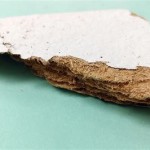Cement is an essential part of any ceramic tile installation. Without it, tiles can become loose, crack, or even come off the wall entirely. The right type of cement must be chosen and applied correctly to ensure a strong and lasting bond between the tiles and the surface they are being applied to.
When selecting a cement for ceramic tiles, it is important to consider the type of tile being installed. For example, tiles made from natural stone may require a different cement than those made from porcelain or ceramic. Additionally, the type of surface the tiles are being applied to will need to be taken into consideration. For instance, a cement that works on a concrete wall may not be ideal for a wooden one.
Once the correct cement has been chosen, it is important to prepare the surface for installation. This includes cleaning the area and removing any dust, dirt, or debris. If the surface is rough or uneven, it should be smoothed with sandpaper or a similar tool.
Once the surface is prepared and the cement has been chosen, the next step is to mix the cement and spread it onto the surface. This should be done using a trowel, and it is important to ensure that there are no gaps between the cement and the tile. Once the cement has been spread, the tiles should be pressed firmly into the cement and the excess cement should be wiped away.
Cementing ceramic tiles is a skill that takes time and practice to master. However, with the right tools and knowledge, it can be a great way to add a professional and long-lasting finish to any tile installation. By taking the time to prepare and install the tiles correctly, you can ensure a strong and durable bond between the tiles and the surface they are being applied to.










Related Posts








